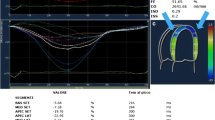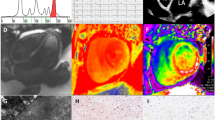Abstract
Introduction
The diagnosis of cardiac amyloidosis (CA) is usually performed by endomyocardial biopsy; however, possible sampling errors and procedural risks such as cardiac tamponade, malignant arrhythmias and bleeding risk, limit its use. Therefore, a non-invasive diagnostic method appears to be necessary.
Materials and methods
Echocardiography plays an important role in this need. Conventional two-dimensional echocardiography appears able to detect some specific and distinguishing signs of cardiac amyloid infiltration.
Results and conclusions
Of these, thickened right and left ventricular (LV) myocardium, normal or small LV cavity size in contrast to enlarged biatrial cavities, diffuse hyper-refractile ‘granular sparkling’ appearance and ‘mismatch’ ECG/ECHO are the most specific findings. The magnitude of cyclic variation recorded with integrated backscatter reflects structural changes in the myocardium. In patients with CA, this magnitude is reduced because myocardial amyloid infiltration is characterized by a reduction of number of “contractile” fibers. Other informations concerning LV dysfunction CA-related can be obtained by Tei index. Finally, new echocardiographic imaging modalities, such as tissue Doppler, Doppler-based strain, speckle tracking imaging and three-dimensional echocardiography, can provide some findings regarding the preclinical stages of LV dysfunction when other echocardiographic measurements are showing normal; however, these are unable to provide a non-invasive diagnosis of cardiac amyloidosis.





Similar content being viewed by others
References
Falk RH, Comenzo RI, Skinner M. The systemic amyloidoses. New Engl J Med. 1997;337:898–909.
Khan MF, Falk RH. Amyloidosis. Postgrad Med. 2001;77:686–93.
Gertz MA, Lacy MQ, Dispenzieri A. Amyloidosis. Hematol Oncol Clin North Am. 1999;13:1211–33.
Shah K, Inoue Y, Mehra M. Amyloidosis of the heart: a comprehensive review. Arch Intern Med. 2006;166:1805–13.
Falk RH. Diagnosis and management of the cardiac amylodoses. Circulation. 2005;112:2047–60.
Klein AL, Hatle LK, Burstow DJ, et al. Doppler characterization of left ventricular diastolic function in cardiac amyloidosis. J Am Coll Cardiol. 1989;13:1017–26.
Dubrey SW, Cha K, Anderson J, et al. The clinical features of immunoglobulin light-chain (AL) amyloidosis with heart involvement. QJM. 1998;91:141–57.
Hattori T, Takei Y, Koyama J, et al. Clinical and pathological studies of cardiac amyloidosis in transthyretin type familial amyloid polyneuropathy. Amyloid. 2003;10:229–39.
Merlini G, Westermark P. The systemic amyloidoses: clearer understanding of the molecular mechanisms offers hope for more effective therapies. J Intern Med. 2004;225:159–78.
Dubrey SW, Cha K, Simms RW, et al. Electrocardiography and Doppler echocardiography in secondary (AA) amyloidosis. Am J Cardiol. 1996;77:313–5.
Takayama F, Miyazaki S, Morita T, et al. Dialysis-related amyloidosis of the heart in long-term hemodialysis patients. Kidney Int Suppl. 2001;78:S172–6.
Berk J, Keane J, Seldin D, et al. Persistent pleural effusions in primary systemic amyloidosis: aetiology and prognosis. Chest. 2003;124:969–77.
Ardehali H, Qasim A, Cappola T, et al. Endomyocardial biopsy plays a role in diagnosing patients with unexplained cardiomyopathy. Am Heart J. 2004;147:919–23.
Weymann AE. Principles and Pratice of Echocardiography. 2nd ed. New York: Lippincott Williams and Wilkins; 1994. p. 809.
Mutagh B, Hammill SC, Gertz MA, et al. Electrocardiographic findings in primary systemic amyloidosis and biopsy-proven cardiac involvement. Am J Cardiol. 2005;95:535–7.
Rapezzi C, Merlini G, Quarta CC, et al. Systemic amyloidoses: disease profiles and clinical course of the main types. Circulation. 2009;120:1203–12.
Miller JG, Perez JE, Sobel BE. Ultrasonic characterization of myocardium. Prog Cardiovasc Dis. 1985;28:85–110.
Masuyama T, Nellesen U, Schnitter I, et al. Ultrasonic tissue characterization with a real time integrated backscatter imaging system in normal and aging heart. J Am Coll Cardiol. 1989;14:702–8.
Masuyama T, Goar F, Tye TL, et al. Ultrasonic tissue characterization in of human hypertrophied hearts in vivo with a real-time integrated backscatter imaging system. Circulation. 1989;80:925–34.
Vitale DF, Bonow RO, Gerundo G, et al. Alterations in ultrasonic backscatter during exercise-induced myocardial ischemia in humans. Circulation. 1995;92:1452–7.
Di Bello V, Talarico L, Picano E, et al. Increased echogenicity of myocardial wall in the diabetic heart: an ultrasound tissue characterization study. J Am Coll Cardiol. 1995;25:1408–15.
Koyama J, Ray-Sequin PA, Falk RH. Prognostic significance of ultrasound myocardial tissue characterization in patients with cardiac amyloidosis. Circulation. 2002;106:556–61.
Tei C, Dujardin KS, Hodge DO, et al. Doppler index combining systolic and diastolic myocardial performance: clinical value in cardiac amyloidosis. J Am Coll Cardiol. 1996;28:658–64.
Oki T, Tanaka H, Yamada H, et al. Diagnosis of cardiac amyloidosis based on the myocardial velocity profile in the hypertrophied left ventricular wall. Am J Cardiol. 2004;93:864–9.
Porciani MC, Lilli A, Perfetto F, et al. Tissue Doppler and strain imaging: a new tool for early detection of cardiac amyloidosis. Amyloid. 2009;16(2):63–70.
Bellavia D, Abraham TP, Pellikka PA, et al. Detection of left ventricular systolic dysfunction in cardiac amyloidosis with strain rate echocardiography. J Am Soc Echocardiogr. 2007;20:1194–202.
Sun JP, Stewart WJ, Yang XS, et al. Differentiation of hypertrophic cardiomyopathy and cardiac amyloidosis from other causes of ventricular wall thickening by two-dimensional strain imaging echocardiography. Am J Cardiol. 2009;103:411–5.
Belkin RN, Kupersmith AC, Kalique O, et al. A novel two-dimensional echocardiographic finding in cardiac amyloidosis. Echocardiography. 2010;27:1171–6.
Phelan D, Collier P, Thavediranathan P, et al. Relative apical sparing of longitudinal strain using two-dimensional speckle tracking is both sensitive and specific for the diagnosis of cardiac amyloidosis. Heart. 2012;98:1442–8.
Perugini E, Rapezzi C, Piva T, et al. Non-invasive evaluation of the myocardial substrate of cardiac amyloidosis by gadolinium cardiac magnetic resonance. Heart. 2006;9:343–9.
Migrino RQ, Harmann L, Woods T, et al. Intraventricular dyssynchrony in light chain amyloidosis: a new mechanism of systolic dysfunction assessed by 3-dimensional echocardiography. Cardiovasc. Ultrasound. 2008;6:40.
Conflict of interest
The author declares that there are no conflicts of interest
Author information
Authors and Affiliations
Corresponding author
Rights and permissions
About this article
Cite this article
Cacciapuoti, F. The role of echocardiography in the non-invasive diagnosis of cardiac amyloidosis . J Echocardiogr 13, 84–89 (2015). https://doi.org/10.1007/s12574-015-0249-1
Received:
Revised:
Accepted:
Published:
Issue Date:
DOI: https://doi.org/10.1007/s12574-015-0249-1




